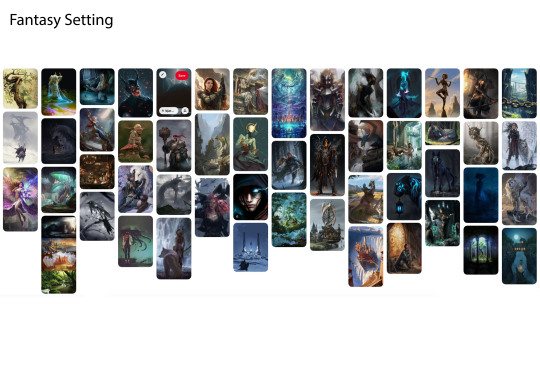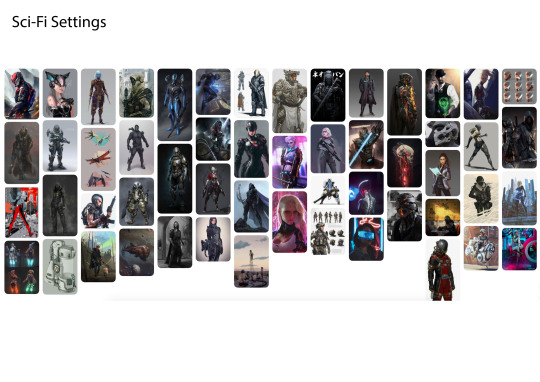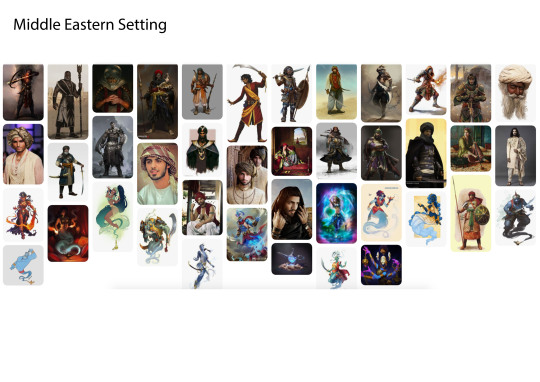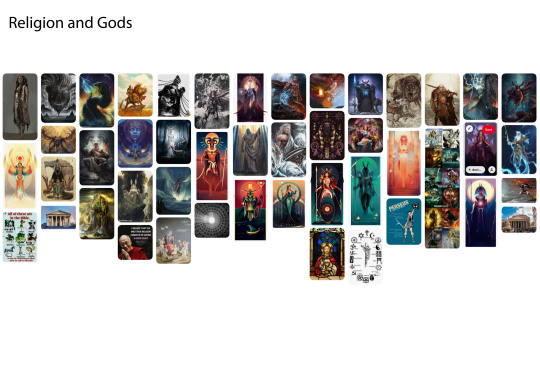Text
Corona Virus (Covid-19)
Coronavirus disease 2019 (COVID-19) is an infectious disease caused by severe acute respiratory syndrome coronavirus 2 (SARS-CoV-2). The disease was first identified in 2019 in Wuhan, the capital of Hubei, China, and has since spread globally, resulting in the 2019–20 coronavirus pandemic. Common symptoms include fever, cough, and shortness of breath. Muscle pain, sputum production, diarrhea, and sore throat are less common. While the majority of cases result in mild symptoms, some progress to pneumonia and multi-organ failure. As of 23 March 2020, the rate of deaths per number of diagnosed cases is 4.4 percent; however, it ranges from 0.2 percent to 15 percent, according to age group and other health problems.
The virus is typically spread during close contact and via respiratory droplets produced when people cough or sneeze. Respiratory droplets may be produced during breathing but it is not considered airborne. It may also spread when one touches a contaminated surface and then their face. It is most contagious when people are symptomatic, although spread may be possible before symptoms appear. The virus can live on surfaces up to 72 hours. Time from exposure to onset of symptoms is generally between two and fourteen days, with an average of five days. The standard method of diagnosis is by reverse transcription polymerase chain reaction (rRT-PCR) from a nasopharyngeal swab. The infection can also be diagnosed from a combination of symptoms, risk factors and a chest CT scan showing features of pneumonia.
Recommended measures to prevent infection include frequent hand washing, social distancing (maintaining physical distance from others, especially from those with symptoms), and keeping unwashed hands away from the face. The use of masks is recommended by some national health authorities for those who suspect they have the virus and their caregivers, but not for the general public, although simple cloth masks may be used by those who desire them. There is no vaccine or specific antiviral treatment for COVID-19. Management involves treatment of symptoms, supportive care, isolation, and experimental measures.
The World Health Organization (WHO) declared the 2019–20 coronavirus outbreak a Public Health Emergency of International Concern (PHEIC) on 30 January 2020 and a pandemic on 11 March 2020. Evidence of local transmission of the disease has been found in many countries across all six WHO regions.
En.wikipedia.org. 2020. Coronavirus Disease 2019. [online] Available at: <https://en.wikipedia.org/wiki/Coronavirus_disease_2019>.
The CoronaVirus is a global pandemic and has caused many governments to shut down their countries, putting the general populous on lockdown to contain the spread of the disease. Due to this the college was closed and we could no longer go into the campus to work, I also work in my local village shop, causing me to be a key worker putting more stress on how much time i can spend working on the project as i never know who will be able to work on what day and when i will be called in to cover shifts for those that cant get into the shop.
0 notes
Text
March 5th
Today I started and finished the writing of my project proposal and have sent it off for marking, this means that my lecturers will look through and make sure that the proposal makes sense and is capable of a passing grade.
I found the writing of the proposal difficult and believe that it is due to my lack of research, this means that I need to look more into the themes of my project.
0 notes
Text
Ragnarok (Netflix Series)
youtube
The Netflix series Ragnarok takes norse mythology and puts a modern spin on it. The story takes place in a fictitious norwegian town ‘Edda’ (the name given to Norwegian myths in both poetic and story forms) which is plagued by climate change and the industrial pollution caused by the factories owned by the local Jutul family, the fifth-richest family in Norway. The Jutuls are actually four Jötunn, frost giants and giantesses posing as a family in Edda. They are challenged by Magne, a teenage boy who is surprised to learn that he is the embodiment of Thor and begins the fight against those that are destroying the planet.
I began watching this before the project started and was enthralled by the story, whilst they have taken some creative licence with the Norse Mythos and given it an interesting twist, using something akin to reincarnation to explain why the main character (Magne) gains the powers he does. The other very interesting point comes from the antagonists (the Jutuls) four giants that were once revered as gods but were removed from power by the aesir gods, they now use money and their super natural powers to keep the town of Edda under their control.
I wanted to make a post on this show because of the links it has to my own work, and the similarities that come out from the stories in Norse mythology and my own story.
0 notes
Text
Celtic Mythology
youtube
Celtic mythology is one of the more obscure Mythos, even though many of the most well known mythical creatures originated from it, such as the Leprechaun, Banshee and Dullahan.
Tír na nÓg:
Tír na nÓg is depicted as an island paradise and supernatural realm of everlasting youth, beauty, health, abundance and joy. Its inhabitants are described as the Tuatha Dé Danann or the warriors of the Tuatha Dé, the gods of pre-Christian Ireland, who engage in poetry, music, entertainment, and the feast of Goibniu, which grants immortality to the participants. In the echtrae (adventure) and immram (voyage) tales, various Irish mythical heroes visit Tír na nÓg after a voyage or an invitation from one of its residents. They reach it by entering ancient burial mounds or caves, by journeying through a mist, by going under water, or by traveling across the sea for three days on an enchanted boat or Manannán's horse. The tales of mortals who visit the Otherworld are referred to as echtrai (adventures) and baili (visions, ecstasies). The path across the sea is called Mag Mell (Plain of Honey). It is the golden path made by the sun on the ocean.
The god that rules this region is said to be the first ancestor of the human race and the god of the dead, and in the surviving tales is almost always named as Manannán mac Lir. In the tales, Manannán is usually described as a warrior and is sometimes accompanied by his golden-haired wife or daughter, who sometimes wears a golden helmet.
Tír na nÓg is described as a beautiful place (a forested wilderness or flowery meadow), but it is usually dangerous or hostile to human visitors (such as Ossian, Diarmuid, the Fianna, the King of Greece), who remain on the island for a period of time that is typically a multiple of three (three days or years). The women of Tír na nÓg are very beautiful and sometimes leave to visit mortal men or otherwise are forced to leave to fulfill Manannán's vows.
There is a salmon-inhabited well or fountain in Tír na nÓg that is found near an enormous tree or grove of nine hazels. Typically an enormous tree lies at the center of the island, and birds singing beautiful music in its branches are stated in the echtrai to be the souls of the dead. A drinking horn suspended near the well or an enchanted cup is also present in some of the tales along with a silver branch containing golden apples. There are cities and fortresses made of precious metals and feather thatch in Tír na nÓg, although their exact number is not clear. In some stories there is a multi-colored flowered plain full of bees in or underneath the forested wilderness of Tír na nÓg.
En.wikipedia.org. 2020. Tír Na Nóg. [online] Available at: <https://en.wikipedia.org/wiki/T%C3%ADr_na_n%C3%93g>.
0 notes
Text
Norse Mythology
youtube
Norse Mythology is one of my favourite mythologies, the stories are so bizarre and interesting and everything has a reasoning for it.
Creation mythos:
Before there was soil, or sky, or any green thing, there was only the gaping abyss of Ginnungagap. This chaos of perfect silence and darkness lay between the homeland of elemental fire, Muspelheim, and the homeland of elemental ice, Niflheim.
Frost from Niflheim and billowing flames from Muspelheim crept toward each other until they met in Ginnungagap. Amid the hissing and sputtering, the fire melted the ice, and the drops formed themselves into Ymir (“Screamer”), the first of the godlike but destructive giants. Ymir was a hermaphrodite and could reproduce asexually; when he slept, more giants leapt forth from his legs and from the sweat of his armpits.
As the frost continued to melt, a cow, Audhumla (“Abundance of Humming”), emerged from it. She nourished Ymir with her milk, and she, in turn, was nourished by salt-licks in the ice. Her licks slowly uncovered Buri (“Progenitor”), the first of the Aesir tribe of gods. Buri had a son named Bor (“Son”), who married Bestla (perhaps “Wife”), the daughter of the giant Bolthorn (“Baleful Thorn”). The half-god, half-giant children of Bor and Bestla were Odin, who became the chief of the Aesir gods, and his two brothers, Vili and Ve.
Odin and his brothers slew Ymir and set about constructing the world from his corpse. They fashioned the oceans from his blood, the soil from his skin and muscles, vegetation from his hair, clouds from his brains, and the sky from his skull. Four dwarves, corresponding to the four cardinal points, held Ymir’s skull aloft above the earth.
The gods eventually formed the first man and woman, Ask and Embla, from two tree trunks, and built a fence around their dwelling-place, Midgard, to protect them from the giants.
Norse Mythology for Smart People. 2020. The Creation Of The Cosmos - Norse Mythology For Smart People. [online] Available at: <https://norse-mythology.org/tales/norse-creation-myth/>.
Odin’s Search for Wisdom:
Odin’s quest for wisdom is never-ending, and he is willing to pay any price, it seems, for the understanding of life’s mysteries that he craves more than anything else. On one occasion, he hanged himself, wounded himself with his spear, and fasted from food and drink for nine days and nights in order to discover the runes.
On another occasion, he ventured to Mimir’s Well amongst the roots of the world-tree Yggdrasil. There dwelt Mimir, a shadowy being whose knowledge of all things was practically unparalleled among the inhabitants of the cosmos. He achieved this status largely by taking his water from the well, whose waters impart this cosmic knowledge.
When Odin arrived, he asked Mimir for a drink from the water. The well’s guardian, knowing the value of such a draught, refused unless the seeker offered an eye in return. Odin – whether straightaway or after anguished deliberation, we can only wonder – gouged out one of his eyes and dropped it into the well. Having made the necessary sacrifice, Mimir dipped his horn into the well and offered the now-one-eyed god a drink.
Norse Mythology for Smart People. 2020. Why Odin Is One-Eyed - Norse Mythology For Smart People. [online] Available at: <https://norse-mythology.org/tales/why-odin-is-one-eyed/>.
Mjolnir:
In this story, Loki the trickster finds himself in an especially mischievous mood and cuts off the gorgeous golden hair of Sif, the wife of Thor. Upon learning of Loki's trickery, Thor is enraged and threatens to break every bone in his body. Loki pleads with Thor and asks for permission to go down to Svartalfheim, the cavernous home of the dwarves, to see if these master craftspeople could fashion a new head of hair for Sif. Thor is convinced and sends Loki to Svartalfheim.
Upon his arrival, Loki is able to complete his promise to Thor as The Sons Ivaldi forge not only a new head of hair for Sif, but also two other marvels: Skidbladnir, the best of all ships, and Gungnir, the deadliest of all spears. Having accomplished his task, Loki remains in the caves with the intention of causing mayhem. He approaches the brothers Brokkr and Sindri and taunts them, saying that he is sure the brothers could never forge three creations equal in caliber to those of the sons of Ivaldi, even betting his head against their lack of ability. Brokkr and Sindri, being prideful dwarves, accept the wager and begin their creation of three marvels.
The first begins with Sindri putting a pig's skin in the forge and telling Brokkr to work the bellows nonstop until his return. Loki, in disguise as a fly, comes and bites Brokkr on the arm to ensure the brothers lose their bet. Nevertheless, Brokkr continues to pump the bellows as ordered. When Sindri returns and pulls their creation from the fire, it is revealed to be a living boar with golden hair which they name Gullinbursti. This legendary creature gives off light in the dark and runs better than any horse, even through water or air.
Next, Sindri puts gold in the forge and gives Brokkr the same order. Loki comes again, still in the guise of a fly, and bites Brokkr's neck, this time twice as hard to ensure the brothers lose the bet. Brokkr, however, continues to work the bellows despite the pain. When Sindri returns they draw out a magnificent ring which they name Draupnir. From this ring, every ninth night, eight new golden rings of equal weight emerge.
Finally, Sindri puts iron in the forge and repeats his previous order once more. Loki comes a third time and bites Brokkr on the eyelid even harder, the bite being so deep that it draws blood. The blood runs into Brokkr's eyes and forces him to stop working the bellows just long enough to wipe his eyes. This time, when Sindri returns, he takes Mjölnir out of the forge. The handle is shorter than Sindri had originally planned which is the reason for the hammer's iconic imagery as a one handed weapon throughout Thor's religious iconography. Nevertheless, the pair are sure of the great worth of their three treasures and they make their way to Asgard to claim the wages due to them.
Loki makes it to the halls of the gods just before the dwarves and presents the marvels he has acquired. To Thor he gave Sif's new hair and the hammer Mjollnir. To Odin, the ring Draupnir and the spear Gungnir. Finally to Freyr he gives Skidbladnir and Gullinbursti.
As grateful as the gods were to receive these gifts they all agreed that Loki still owed his head to the brothers. When the dwarfs approach Loki with knives, the cunning god points out that he had promised them his head but not his neck, ultimately voiding their agreement. Brokkr and Sindri contented themselves with sewing Loki's mouth shut and returning to their forge.
En.wikipedia.org. 2020. Mjölnir. [online] Available at: <https://en.wikipedia.org/wiki/Mj%C3%B6lnir>.
Loki’s Children:
HEL – Daughter of Loki and Angrbotha
Ruler of a realm that bears her name, Hel was believed to be a death goddess. To “go to Hel” was to die, specifically off the battlefield of illness or old age. The Norse believed that all those who died off the glorious field of war would be denied entry to Odin’s great feasting hall of Valhalla, and would instead freeze for all eternity in Hel.
Hel was believed to have a face split into two halves, one of them beautiful and the other hideously ugly. An enemy of Odin, Hel and her many servants were believed to fight as part of the army of Loki and the giants at Ragnarok.
JORMUNGANDR – Son of Loki and Angrbotha
Believed to be a truly colossal snake, Jormungandr (literally “Enormous monster”) lived in the great ocean that was believed to encircle Midgard – the Norse word for the world of mortals, and the middle of the nine worlds (this is where Tolkein got Middle Earth from). The snake, so the Norse believed, held the earth in place by wrapping himself all the way around it with his tail in his mouth, and when Jormungandr eventually let go the world would end.
Jormungandr was thought to have a bitter rivalry with Thor, son of Odin and god of thunder, and they encountered one another three times:
The first sees Jormungandr disguised as an enormous cat, and Thor faces with the challenge of lifting so massive a creature. The god cannot lift so gigantic a being as Jormungandr, but can lift him sufficiently high that one of his four paws leaves the ground – described by the king of the giants as an impressive achievement.
The second time Jormungandr and Thor meet, the thunder god is fishing with the giant Hymir, using the heads of oxen as bait. Jormungandr bites one of the heads, and Thor pulls him up, partially out of the water. Jormungandr, dripping in blood and venom, makes Hymir pull back in terror. As Thor prepares to kill the snake with his hammer, Mjolnir, Hymir cuts the fishing line and allows Jormungandr to slither back beneath the surface of the water.
The third and final encounter between Jormungandr and Thor occurs during Raganrok, the great final battle that ends the world. Jormungandr will finally leave the oceans and poison the sky. He and Thor will then battle one another fiercely until Jormungandr is finally struck dead by Mjolnir. Thor will then take nine steps forward before dropping dead himself, Jormungandr’s venom having killed him.
FENRIR – Son of Loki and Angrbotha
Just as Jormungandr is a giant snake, so Fenrir is a giant wolf. Terrified of what Fenrir might be able to do if left unchecked, the gods decided to bind the great wolf, but found that he broke every rope and chain used. In the end, the dwarves fashioned a magical, unbreakable ribbon called Gleipnir, made from the sound of cat’s footfall, the beard of a woman, the spit of a bird, the breath of a fish, the roots of a mountain and the nervousness of a bear – the reason none of these six things exist, according to Norse mythology, is that they all went into the making of Gleipnir. However, Fenrir refused to be bound unless one of the gods put their hand in his mouth while it was happening. Tyr, the war god, eventually agreed to be the one to place his hand in the wolf’s mouth. When he discovered he could not break Gleipnir, Fenrir bit Tyr’s hand off.
Fenrir was thought to be a father himself. His two sons, Skoll (Treachery) and Hati (Hate), chase the sun and the moon across the sky – the Norse explanation for why we have day and night. Furing Ragnarok, the two sons of Fenrir will finally catch and devour their prey.
Fenrir himself was believed to be one of the participants in one of the greatest duels in all of Norse mythology. During Ragnarok, he will personally fight Odin, the chief god of the Norse pantheon – and he will win. Fenrir will kill Odin by swallowing him whole, but will then himself be killed by Vithar, Odin’s son and the god of vengeance.
SLEIPNIR – Son of Loki and Svathlifari
Loki is Sleipnir’s mother, having taken the form of a mare and mated with the stallion Svathlifari (“Unlucky traveller”). The result of this union was Sleipnir, an eight-legged horse ridden by Odin. The fastest and best of all horses, Sleipnir was even able to travel to Hel, and took the god Hermothr there to ransom for the god Baldyr’s soul.
Depictions of Sleipnir are incredibly common across Scandinavia, Iceland and those parts of Britain and Ireland most affected by Viking invasions. Almost always, every one of Sleipnir’s legs is visible, and Odin can be seen sitting on his back.
NARFI – Son of Loki and Sigyn
Not much is known of Narfi, except that he was killed by his half-brother Vali, who had been transformed into a wolf. Later, during Loki’s punishment by the gods for his many crimes and misdemeanours, especially causing the death of Baldyr, Narfi’s guts are used to bind his father.
VALI – Son of Loki and unknown mother
Like Narfi, we do not know very much about Vali and his role in Norse mythology. All that is known for certain is that he was a son of Loki and was transformed by the gods into a wolf, in which form he killed his half-brother Narfi.
The Herodotus History Blog. 2020. Norse Mythology – The Children Of Loki. [online] Available at: <https://herodotushistoryblog.wordpress.com/2016/04/07/norse-mythology-the-children-of-loki/>.
0 notes
Text
Pinterest Boards

I looked at Fantasy settings for the game, thinking that if i could find something that caught my eye i could then build my game off of the setting.

I also thought about using a Sci-Fi setting to contrast with the theme of Gods and mythology.

Middle eastern history and myth is an interesting topic for a setting as although many games have already used the setting there are still many unexplored avenues to take with the mythology and the culture.

I looked at Post apocalypse as a possible setting as whilst its one of the most over saturated settings in the industry at the moment it also holds some of the most interesting environments and theories for games, nature reclaiming cities and vehicles, gods wandering the world they made and brought to an end.

I've always had a fascination with religion and mythology and the way that the stories told were once and still are believed in completely through faith, which leads me to reading for hours about the fantastical stories that these civilisations believed in and the origins of each one.
0 notes
Text
Idea
I want to make a game with Mythology and Gods as its theme. My initial idea was to incorporate stories from life and twist them so that the people in those stories would rise to godhood through their actions, however after some thought and discussions with my lecturers i decided on a game in which The main character stumbles upon a Mountain top monastery and ventures inside only to find that the monestary is in fact a retirement home/ asylum for gods of old mythologies run by the Christian church, he would then have to help the old gods to remember who they are by finding and retrieving Objects relating to their powers and identities, by doing so he inadvertently causes and uprising in the asylum leading to the gods fighting among themselves and the Christians gaining small abilities related to the gods he has helped he them has to help the gods over throw the Chrisitans who have forsaken their own god and locked them in the asylum along with the rest and are governing through their own power as humans attempting to come as close to godhood as possible.
At the end of the game the main character is given the choice of attaining godhood or wiping their memories and leaving the asylum once and for all.
0 notes